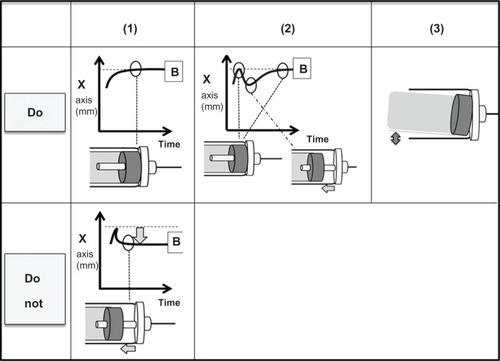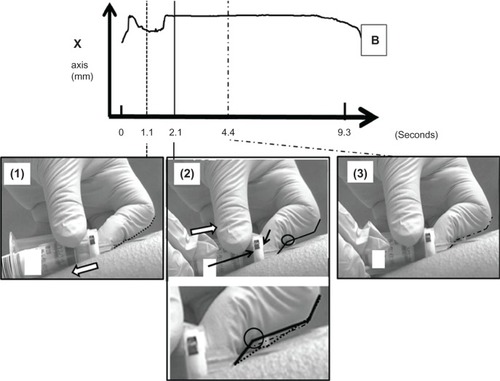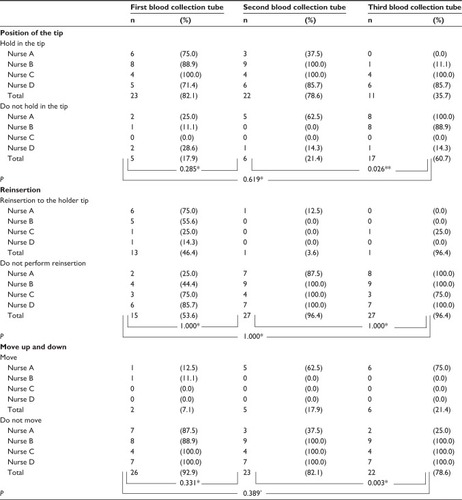Figures & data
Figure 1 Using markerless measuring device. Venipuncture skills were delineated on the basis of video images observed frame by frame, and a graph of x and y coordinates was created by Winanalyze. Tracking points: a, the welded part of the needle and the needle base; B, the bottom of the rubber base of the tube. Venipuncture with time course: a, puncture; b, needle enters the vein; c and e, first or second blood-collection tube (5 mL) with separating gel; d and f, removed and inserted; g, the third blood-collection tube (2 mL) contained ethylenediaminetetraacetic acid-2K.

Figure 2 Observation items: position of the tip (1); reinsertion (2); movement up and down (3).Note: B stands for the point at the bottom of the rubber base of the tube.

Table 2 Comparison of time taken for different observation items
Figure 3 Characteristic movements used to grasp the holder: the first blood collection tube is detached (1); reinsertion of the blood-collection tube; the second finger of the left hand is pushed back so that the needle does not advance too much (2); the blood-collection tube is held with both hands (3).Note: B stands for the point at the bottom of the rubber base of the tube.

